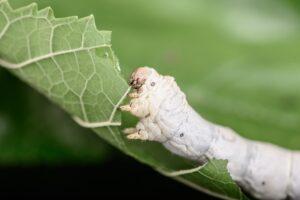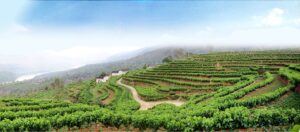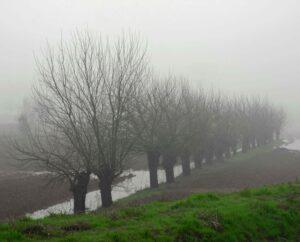Mulberry Silk – The natural fibre and the agricultural system that protect the enviroment
Mulberry silk – The natural fibre and the agricultural system
Cover crop and multifunctional agriculture – Environmental protection

Mulberry silk is a highly sustainable natural fibre with a holistic 360° approach. The production system of silk is closely linked to the agricultural element of the cultivation of the mulberry tree, which represents the only and exclusive food of the silkworm.
Silk would not exist without the mulberry, and the mulberry tree would have no reason to exist without the silkworm.
Mulberry cultivation is an arboreal cultivation that the FAO, since the early 2000s, has used as an example as a typical process of retro-innovation aimed at bringing back and reintroducing a historic cultivation, particularly Italian, in a modern and multifunctional cover crop approach.
What is multifunctional agriculture
By multifunctional agriculture, we mean cultivation that is capable of going beyond a pure productivist vision, introducing a varied series of ecological evidences, as well as a landscape and territorial value.

In addition to its primary function of producing food and fibres, agriculture can also design the landscape, protect the environment and the region and conserve biodiversity, sustainably manage resources, contribute to the socio-economic survival of rural areas, and ensure food security. When agriculture adds one or more of these functions to its primary role, it can be defined as multifunctional” – from the proceedings of the OECD 2001 meeting (Organisation for Economic Co-Operation and Development)
Multifunctionality therefore means the achievement of different functionalities:
- The economic functionality: understood as generative of productivity, income and employment;
- The environmental functionality: linked to the conservation of the landscape and the environment through the enhancement of natural resources;
- The social functionality: linked to cultural, social and recreational traditions and customs.

A series of studies recently published in renowned scientific journals, (Journal of Resource and Ecology, Italian journal of Animal Sciences, etc.) have identified mulberry specifically as the tree species with multifunctional characteristics, as well as a cover tree culture that is capable of:
- Preserving the territory and the environment
- Innovating and improving environmental impact
- Ensuring circularity and agroecology
- Capturing significant amounts of CO2 and greenhouse gases in the subsoil
- Being a valid alternative, also in terms of gain compared to more polluting crops
To further confirm the extreme value of the mulberry plant, its fruits have been included in the superfood category thanks to their excellent nutritional and antioxidant characteristics.
What are cover crops?
Cover crops, or catch crops, are crops of plant species with the purpose, often complementary, of protecting the soil from erosion and/or avoiding the loss of vital and important nutritional elements.
Cover crops allow the maximum absorption of solar radiation and nutrients, in periods of non-cultivation or in periods following intensive crops. The introduction of cover crops allows a substantial improvement in the sustainability of the agricultural process.
Which species are ideal for cover crops?
The ideal species for cover crops are: Poaceae or grasses, legumes, Brassicaceae, boraginaceae, and polygonaceae
What are the benefits of cover crops?
Cover crops, in addition to being crops in their own right, which are able to guarantee a contribution in terms of final product, play important functions:
- Anti-erosion effects that work against atmospheric elements such as water and wind, through radical complexes that compact the soil and shrubs that reduce the impact of rain;
- Capturing of nutrients, such as nitrates and minerals, synthesised through the roots;
- Effect on the organic substance, bringing new elements and reversing the loss of nutrients, improving the fertility of the soil;
- Effect on biodiversity, increasing the variety of crop types that are present in the territory;
- Effect on pest species, through control and mitigation on pest-infested plants;
- Mitigating effect on pests and diseases;
- Effect on limiting human intervention, reducing maintenance intervention.
Agriculture and sericulture – The Italian case

Sericulture disappeared from the horizon of Italian agriculture at the beginning of the 20th century, with the advent of synthetic fibres, which were more affordable than mulberry silk in terms of price.
The transition was traumatic, transitioning within a few years from a situation of biodiversity to that of preferred monocultures based on productivity and profitability, (chemical fertilisers to replace rotation, exaggerated mechanisation, genetic selection of high-yield varieties and high land use)
The challenge that arises in these years and that will be posed for the future is to work actively so that the cultivation of the mulberry plant can once again become an opportunity for growth and biological differentiation for Italy, with a retro-innovation process that is capable of enhancing the multifunctionality and the characteristics of cover culture typical of the mulberry plant.
The challenge is to fully recognise the exceptional ecological, environmental and biodiversity characteristics of the silk system, and of mulberry silk, the most modern and ancient fibre known to man.

